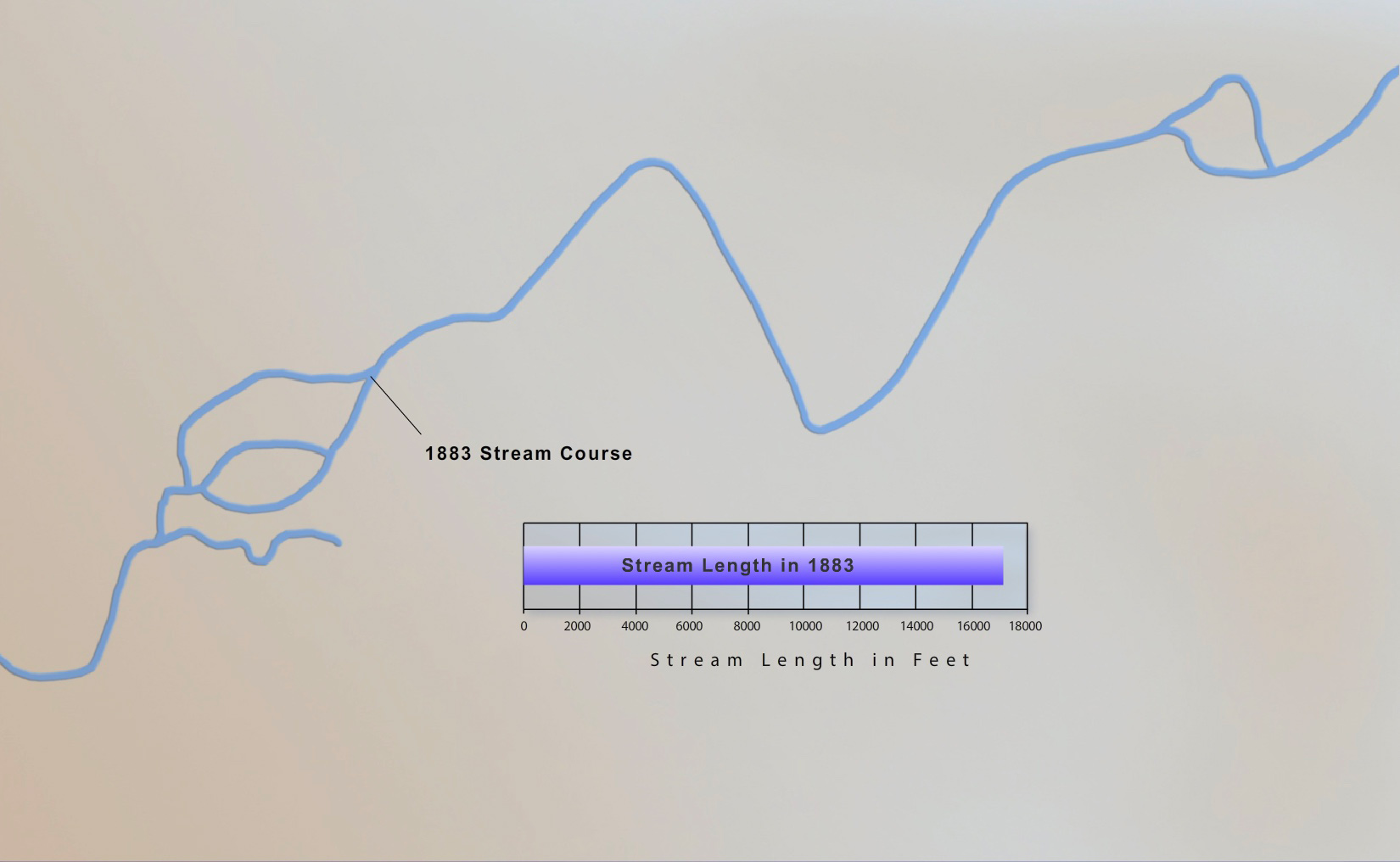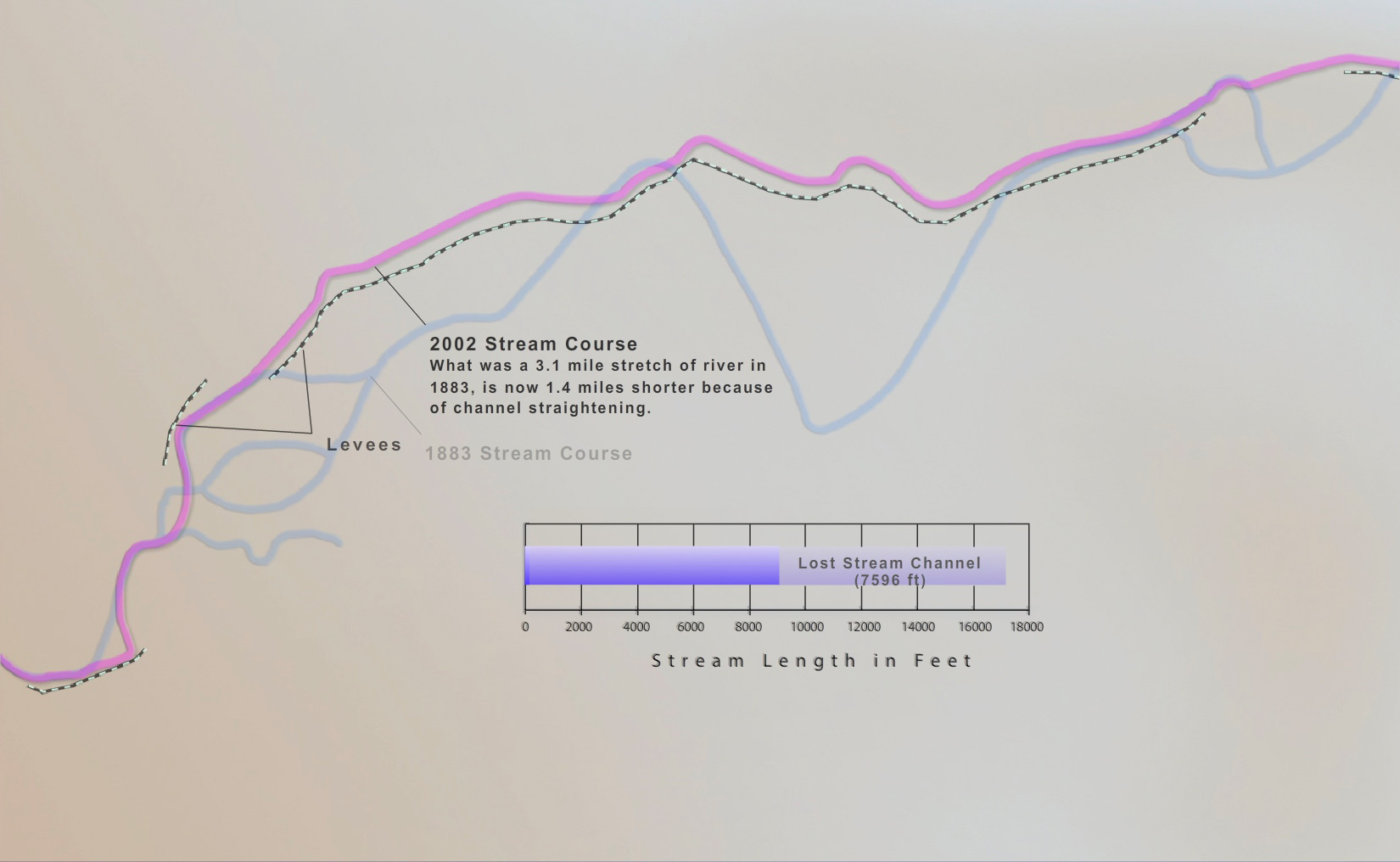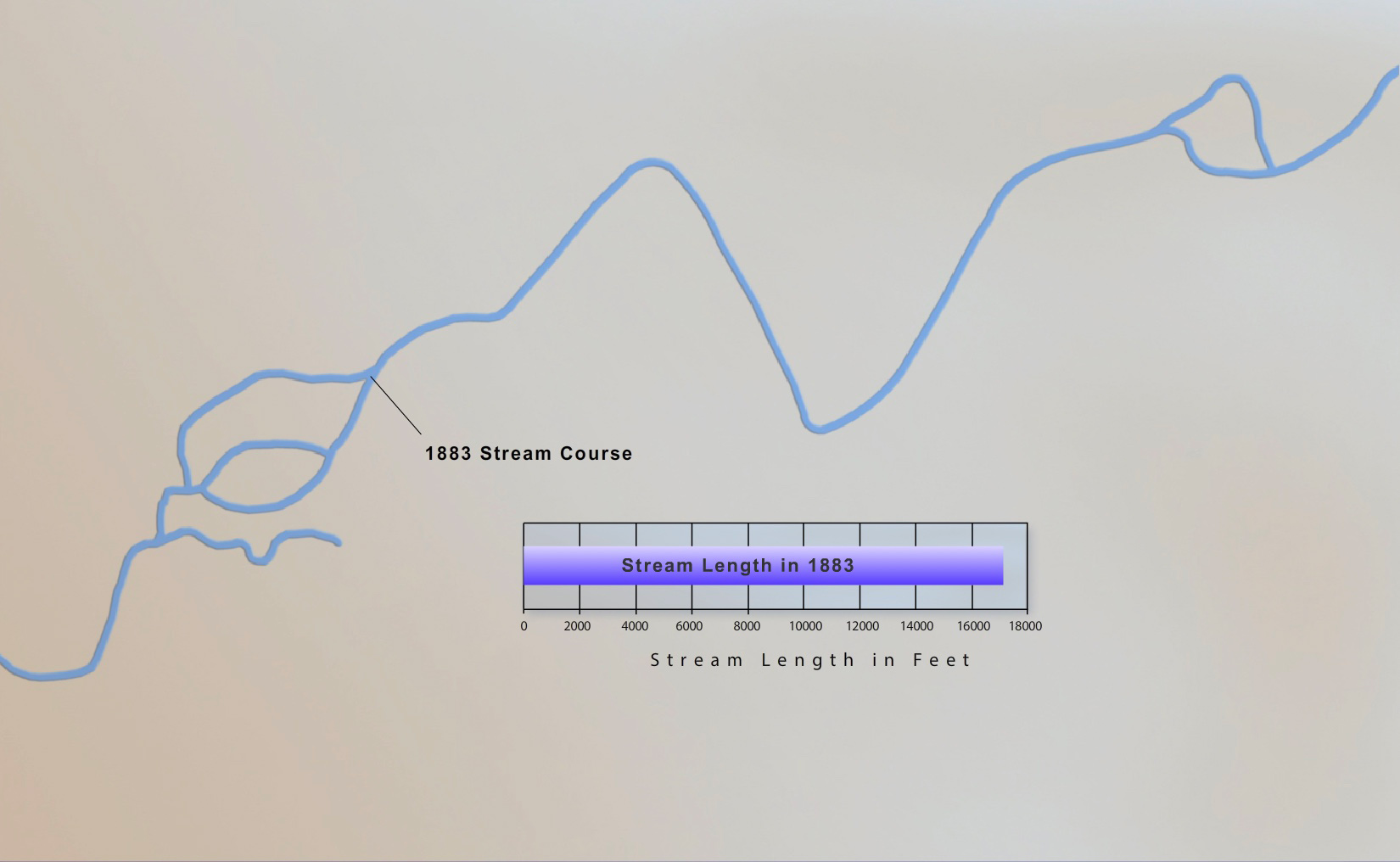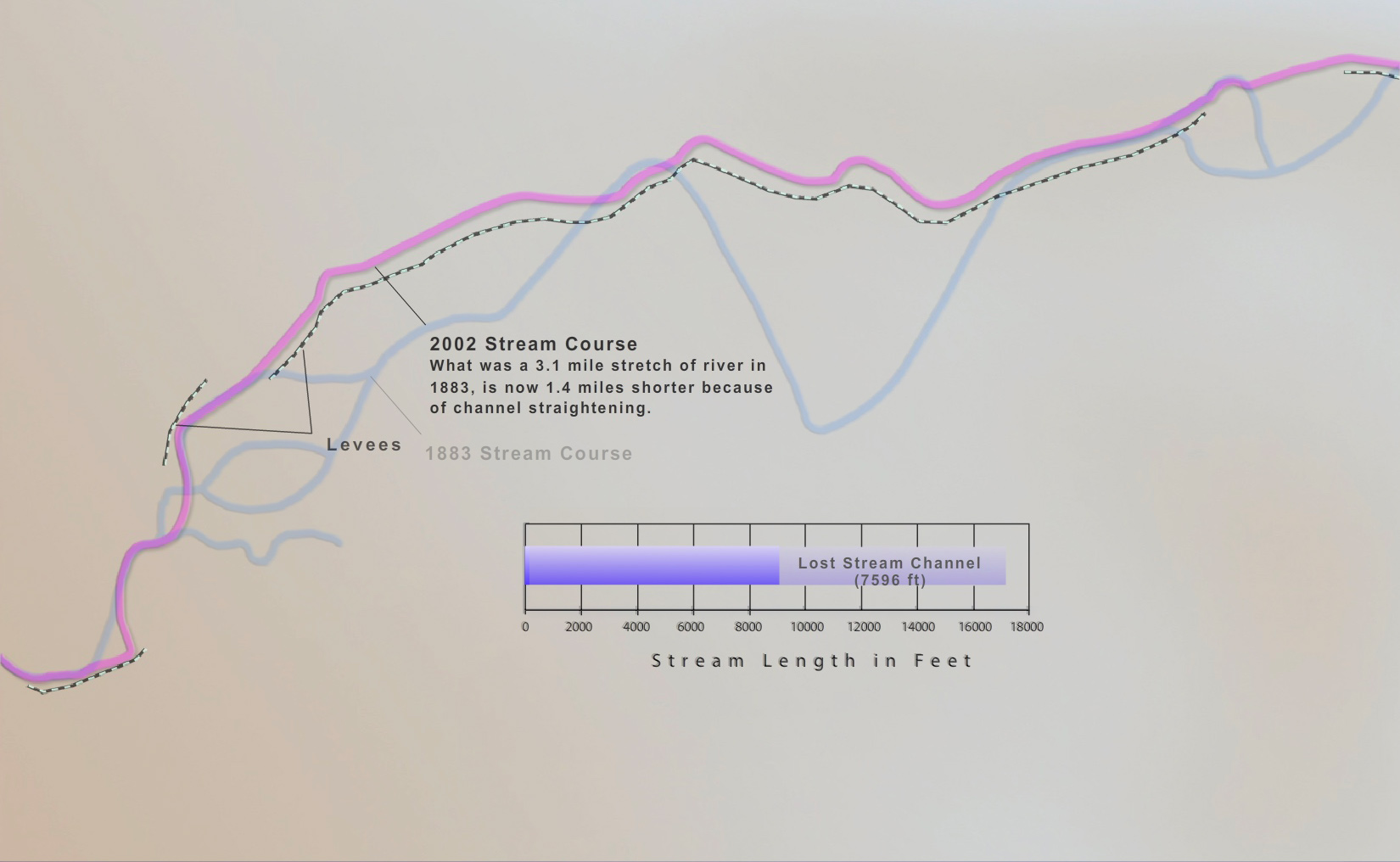Channel straightening replaces a winding stream with a shorter, straighter stream. The new channel has a steeper slope because water makes the same elevation drop over a shorter distance. After straightening, the stream adjusts. Water begins to flow faster, causing increased scour of the streambed and increased bank erosion. As erosion continues, increasing amounts of soil are deposited downstream, and streamside landowners are faced with more problems.
Channel straightening is also costly. Besides the immediate environmental damage due to the loss of fish and wildlife habitat, there are long-term adverse impacts such as damage to the downstream channel, increased water temperature from loss of shading, increased turbidity, increased erosion, and more difficult fish migration due to increased water speeds.
How We Straightened a Stream


These illustrations shows the changes in a small portion (a 3.1 mile reach) of the Jocko River between 1883 and 2002. The first image shows the stream in 1883, the second the same reach in 2002. During that time, levees, a highway, and the railroad were constructed and the river was straightened.
Channel straightening replaces a winding stream with a shorter, straighter stream. The new channel has a steeper slope because water makes the same elevation drop over a shorter distance. After straightening, the stream adjusts. Water begins to flow faster, causing increased scour of the streambed and increased bank erosion. As erosion continues, increasing amounts of soil are deposited downstream, and streamside landowners are faced with more problems.
Channel straightening is also costly. Besides the immediate environmental damage due to the loss of fish and wildlife habitat, there are long-term adverse impacts such as damage to the downstream channel, increased water temperature from loss of shading, increased turbidity, increased erosion, and more difficult fish migration due to increased water speeds.
How We Straightened a Stream


These illustrations shows the changes in a small portion (a 3.1 mile reach) of the Jocko River between 1883 and 2002. The first image shows the stream in 1883, the second the same reach in 2002. During that time, levees, a highway, and the railroad were constructed and the river was straightened.
Channel straightening replaces a winding stream with a shorter, straighter stream. The new channel has a steeper slope because water makes the same elevation drop over a shorter distance. After straightening, the stream adjusts. Water begins to flow faster, causing increased scour of the streambed and increased bank erosion. As erosion continues, increasing amounts of soil are deposited downstream, and streamside landowners are faced with more problems.
Channel straightening is also costly. Besides the immediate environmental damage due to the loss of fish and wildlife habitat, there are long-term adverse impacts such as damage to the downstream channel, increased water temperature from loss of shading, increased turbidity, increased erosion, and more difficult fish migration due to increased water speeds.
How We Straightened a Stream


These illustrations shows the changes in a small portion (a 3.1 mile reach) of the Jocko River between 1883 and 2002. The first image shows the stream in 1883, the second the same reach in 2002. During that time, levees, a highway, and the railroad were constructed and the river was straightened.